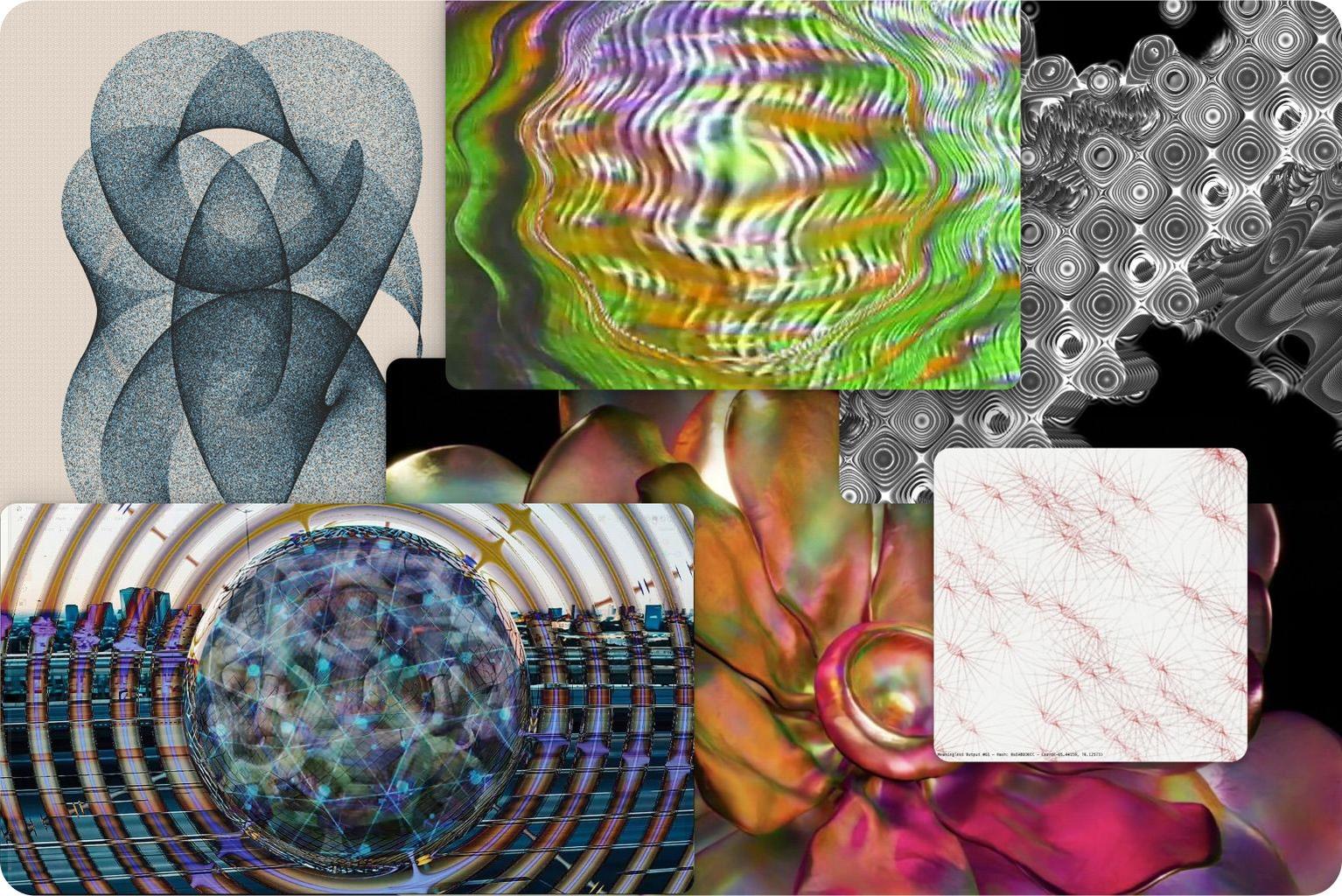What’s Generative Art?
The art world is in the midst of a profound shift. Once defined by canvases and sculptures, galleries are now opening their doors to digital works as demand for new mediums grows. At the forefront of this transformation is generative art — art created through algorithms and artificial intelligence.
What began as a niche experiment in technology has matured into a driving force, reshaping how art is made, valued, and collected. Far from being a futuristic novelty, generative art has deep roots stretching back to the earliest computer experiments and continues today with AI-driven works that challenge our very idea of authorship. Generative art reflects the spirit of our time: a world where creativity is inseparable from technology, and where collaboration between human imagination and machine logic opens entirely new possibilities for artistic expression.
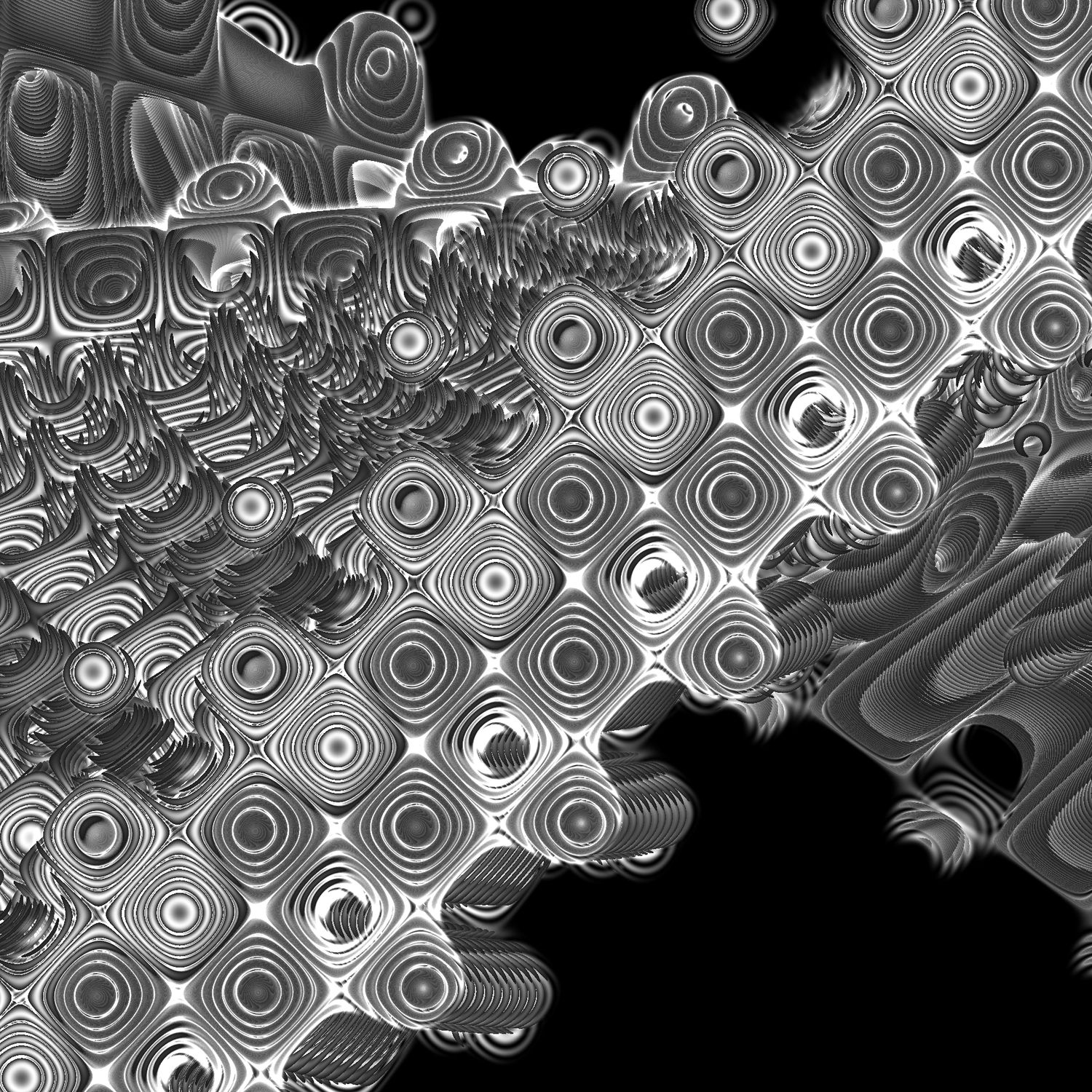 Chrono-Iterations in the Spacetime Loom #2 by Nicu P.
Chrono-Iterations in the Spacetime Loom #2 by Nicu P.
In this article, we will explore generative art, bringing it to life with real-world examples from the Collection by Yara Agency.
What is Generative Art? Definition, Origins, and Key Concepts
In simple terms, generative art is a form of art created using systems, algorithms, or code. It involves setting rules or parameters and allowing the system to generate results—often surprising and unpredictable ones.
The roots of generative art date back to the early days of computer art, when pioneers utilized plotters and programming languages to explore new forms of visual expression:
- Vera Molnár, often called the “godmother of generative art”, began experimenting with computer-generated geometric patterns in 1968, introducing controlled randomness into her work.
- In the 1970s, Harold Cohen created AARON, one of the first AI art systems capable of producing drawings and paintings. It evolved over decades, proving that machines could act as collaborators in the creative process.
While today generative art is often associated with AI, it is in fact a much broader practice - one that can involve randomness, mathematical patterns, algorithmic design, and the intentional input of the artist. In this way, generative art is not about replacing creativity with machines, but about expanding the tools artists use to shape entirely new forms of expression.
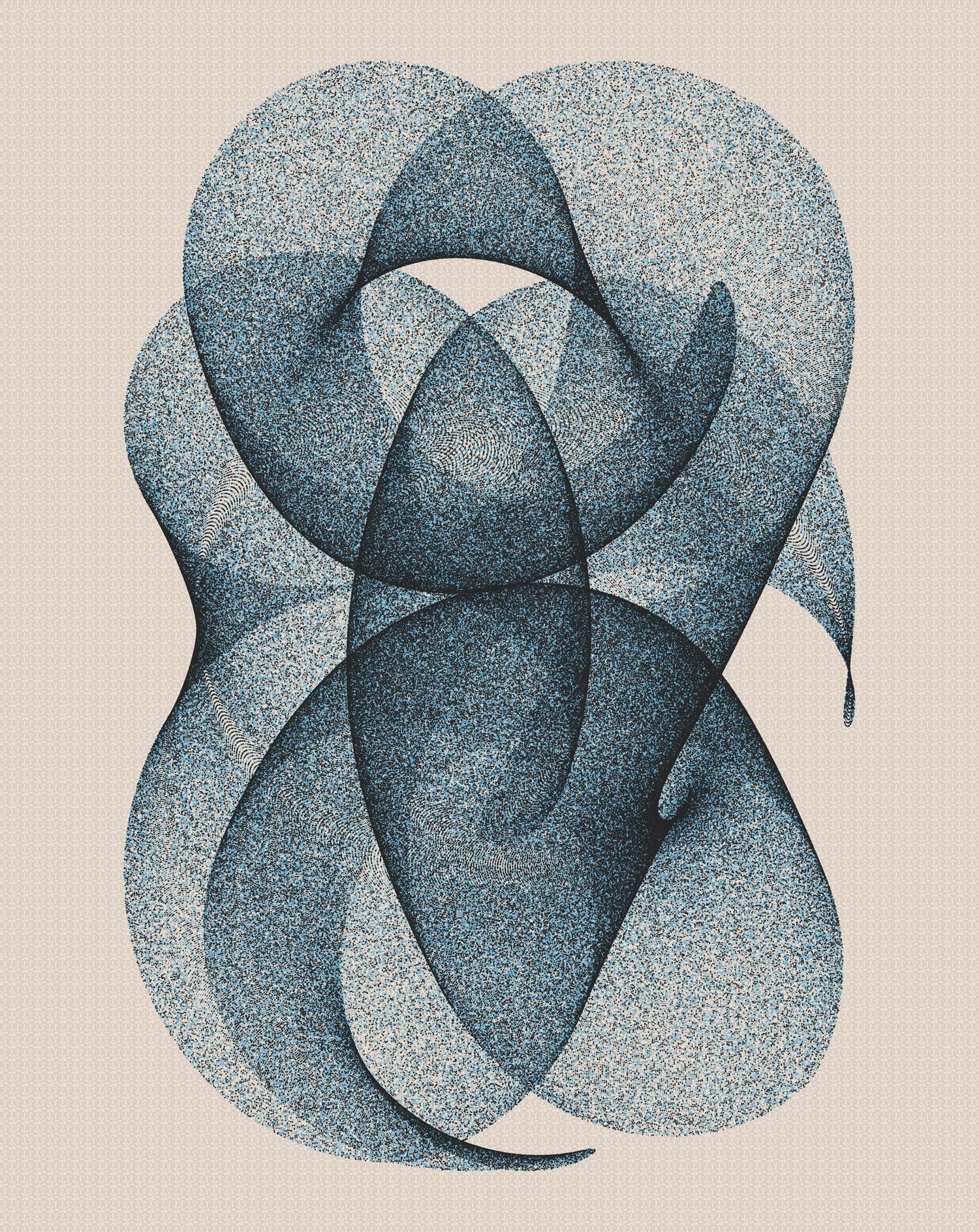 The Eternal Search for Simplicity by Fernando Cabral
The Eternal Search for Simplicity by Fernando Cabral
The Generative Art Collection by Yara Agency: From Grid to Grit
Today, the frontiers of generative art are shaped by a growing number of innovative artists, yet one of the most compelling places to experience this movement is the Collection by Yara Agency (powered by Digital Original). This collection represents a curated journey from Grid to Grit - moving from the precise, linear structures that defined early algorithmic works to the diverse, experimental forms of today’s digital practice.
The collection brings together artists working with code, AI, and 3D tools to question authorship, emotion, and the role of machines in modern culture. Their works illustrate the shift from the rigid “grid” of early digital art to the textured “grit” of today: imperfection, abstraction, organic chaos, and layered symbolism. What connects them all is a shared conviction that code is not just a tool, but a profound medium of artistic expression.
Spotlight on Key Artworks from the Collection
Within the Collection by Yara Agency, several standout works showcase the diversity and depth of contemporary generative art. Let’s take a closer look at some of them!
Meaningless Output by 446f6d is a system-generated text landscape with no input, trained on nothing. This piece questions the assumptions behind generative aesthetics: if the structure is familiar enough, do we still need truth underneath?
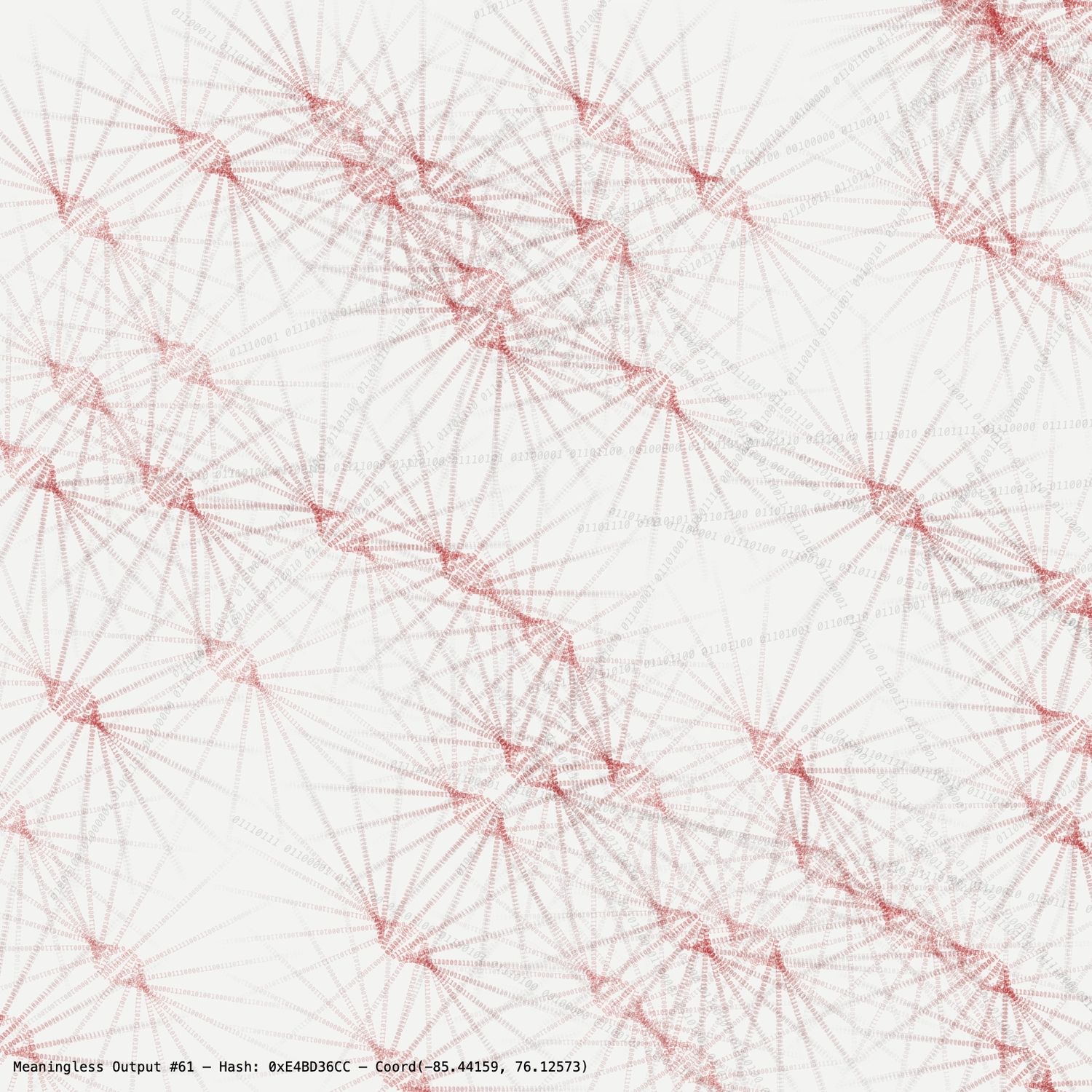
Standing Waves #1 by Michael J. Masucci is a great example of the early computer art created on an Atari 800 in 1982.
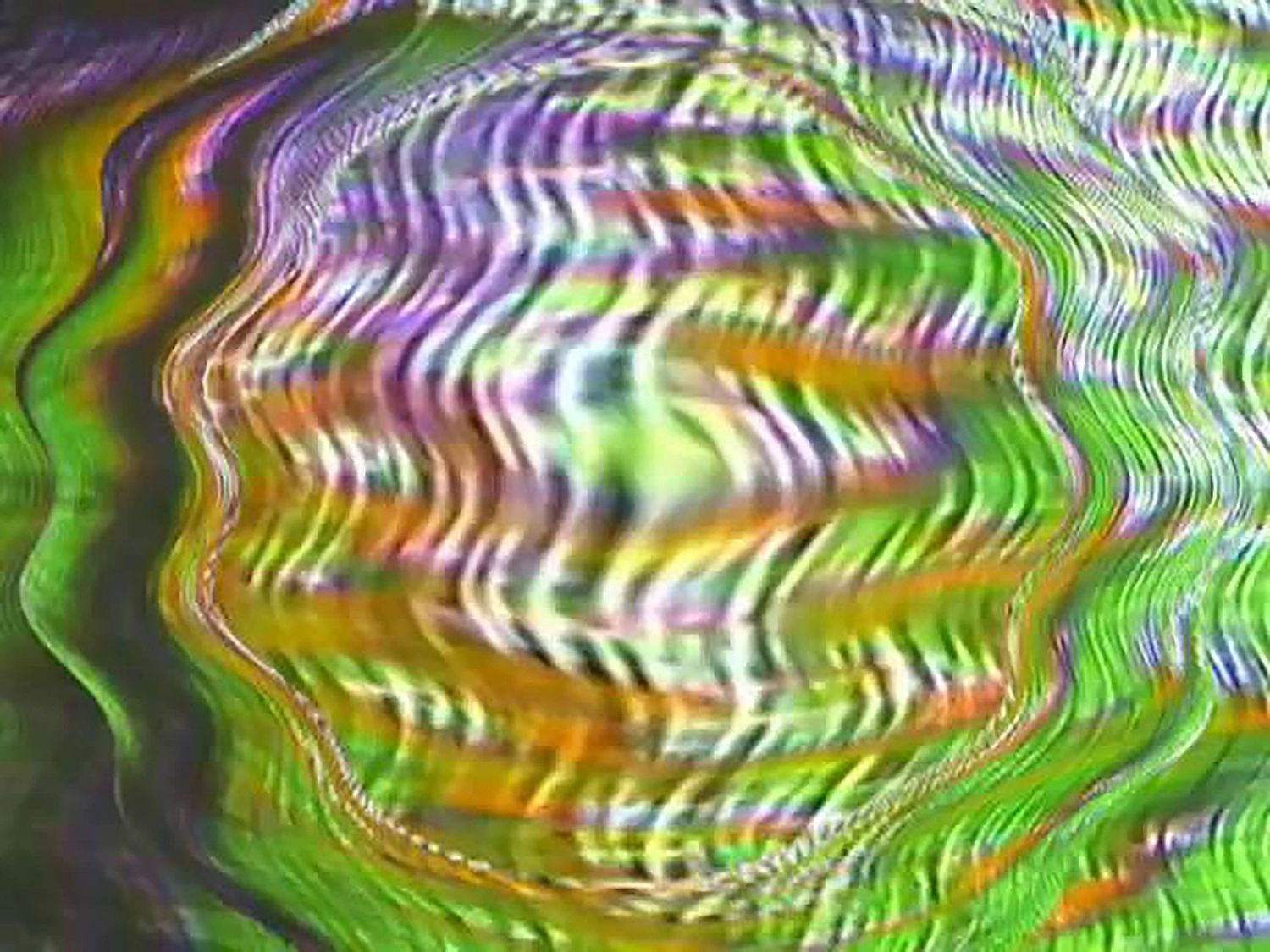
Abstract Spheroid by Victor Acevedo was made in 2024 with real-time VJ software, building on his decades of digital practice. This “digital mandala” is expressed as a geodesic spheroid in the center of concentric circular waves floating above an AI-generated highway and cityscape.
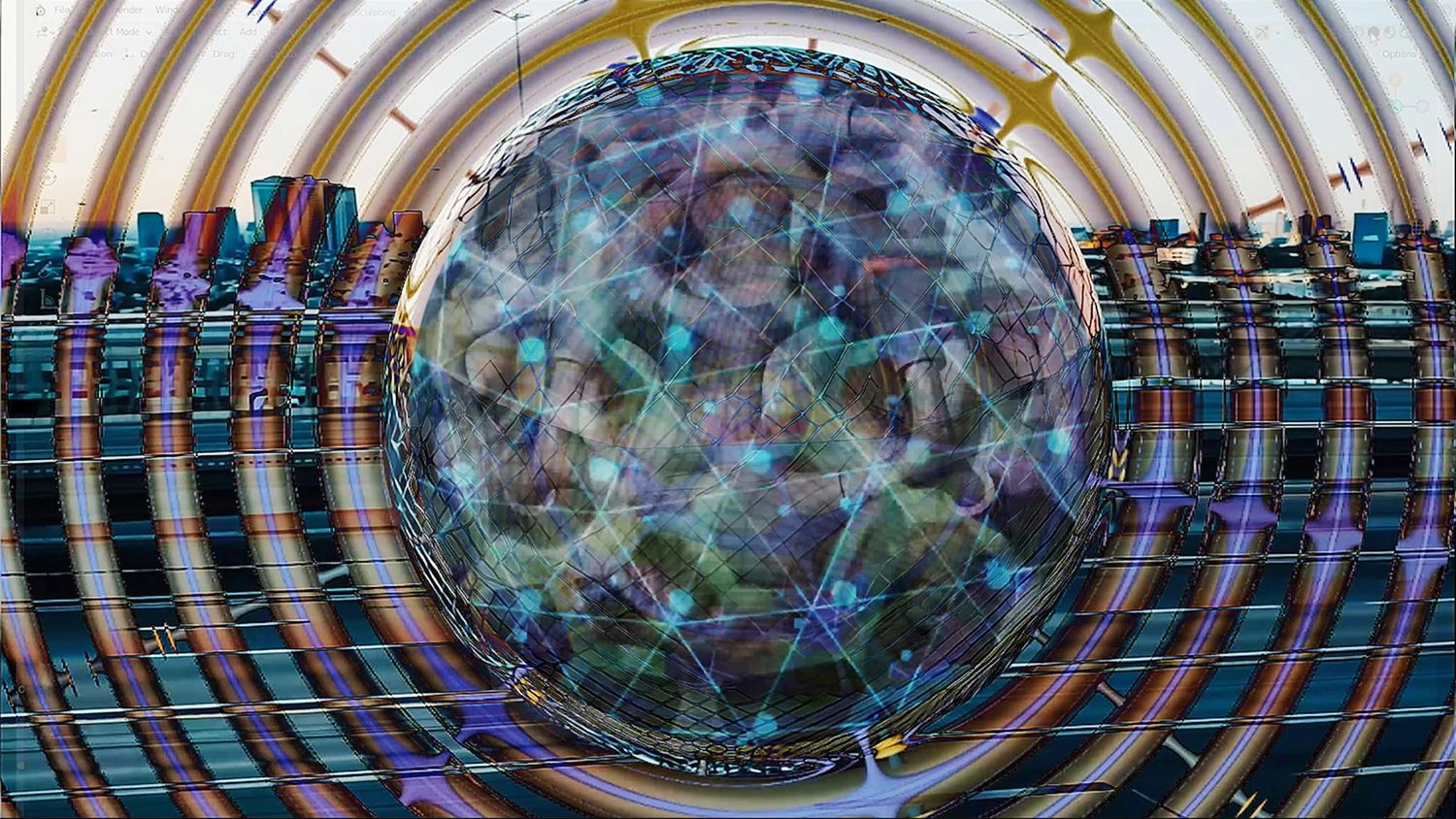
Other highlights of the collection include:
- Nicu P’s generative series with p5.js and GLSL.
- Pawel Dudko’s Between Lenses, a JavaScript co-creation.
- Mark Chavez’s prompt-based generative artwork with activist text.
- Fernando Cabral’s immersive JavaScript textures.
- Nygilia’s digital meditation on identity.
- NISCHEOM’s sci-fi-inspired dreamscapes.
- Buitrago.eth’s translation of generative systems into physical painting.
Together, these works demonstrate the extraordinary range of approaches within generative art - from early computer experiments to today’s AI-driven worlds. What unites them is a shared exploration of how systems, algorithms, and human intention can merge to create meaning.
Curatorial Context
Behind the abovementioned collection is Olena Yara, a seasoned curator, Web3 marketing expert, and the founder of Yara Agency. She has led digital strategy at Fuelarts and LiveArt, collaborating with institutions such as Christie’s Education, Forbes Web3, and Tezos. Her passion for art and deep knowledge of the field have led her to curate generative, creative-coded, and early computer art on Digital Original.
Recently, Olena hosted a webinar with artists and community members, creating space for dialogue around the collection and its themes. In this very new episode of The Omakase Show, Olena and three featured artists, Pawel Dudko, Nygilia, and Nicu P., explored From Grid to Grit.
Rather than presenting generative art as isolated objects, Olena frames the collection as an ongoing conversation about how generative aesthetics echo the textures of our daily digital lives.
Why Generative Art Matters Today
Generative art has evolved from a niche experiment into a mainstream artistic movement, with several factors contributing to its growing significance in 2025. The Collection by Yara Agency serves as a strong example of this development.
Its importance lies in three key areas:
- A visual language of our time – Generative art reflects the digital-first way we live, where creativity and technology are inseparable.
- Role in design and culture – From generative design in architecture to algorithmic fashion and branding, its logic shapes not just art but our everyday environment.
- Digital identity and culture – Generative aesthetics resonate with a generation raised on algorithms, questioning what creativity, authenticity, and authorship mean in the AI age.
By combining creativity with systems, algorithms, and AI, generative art unlocks forms of expression that are both personal and technological. It lets creators translate technological logic into sensory experience, opening new modes of expression that feel native to our digital era.
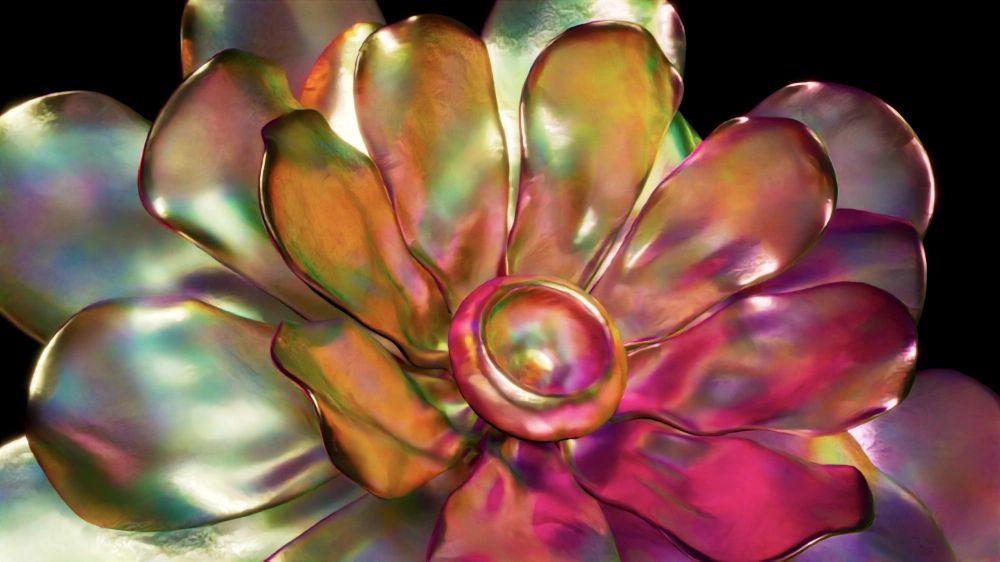 Chromatic Flower by metaempath
Chromatic Flower by metaempath
Getting Started with Creative Coding
The best thing about generative art is that everyone can explore it themselves. Here’s how to begin:
- Learn the basics of p5.js or Processing, two accessible frameworks designed for artists and beginners in creative coding.
- From there, you can dive deeper into tools like GLSL to experiment with shaders and more advanced coding.
- Online tutorials, open-source projects, and active communities make it easier than ever to pick up new techniques and find inspiration.
- Practice randomness, iteration, and systems-based thinking.
Also, consider working with AI tools to create something new. These tools are more accessible than ever, empowering artists to create sophisticated works.
Above all, remember that generative art thrives on experimentation: the process is just as important as the results, and often the unexpected outcomes are the most rewarding.
Conclusion: Explore the Future of Generative Art
Generative art is both an artistic and technological movement—one that redefines creativity in the digital era. By combining human imagination with systems, algorithms, and AI, it creates new forms of expression that feel native to our time.
To see this evolution firsthand, explore the Collection by Yara Agency, a curated journey through the possibilities of generative aesthetics. And if you feel inspired, consider trying creative coding yourself; the next chapter of this movement may begin with your own experiments.

